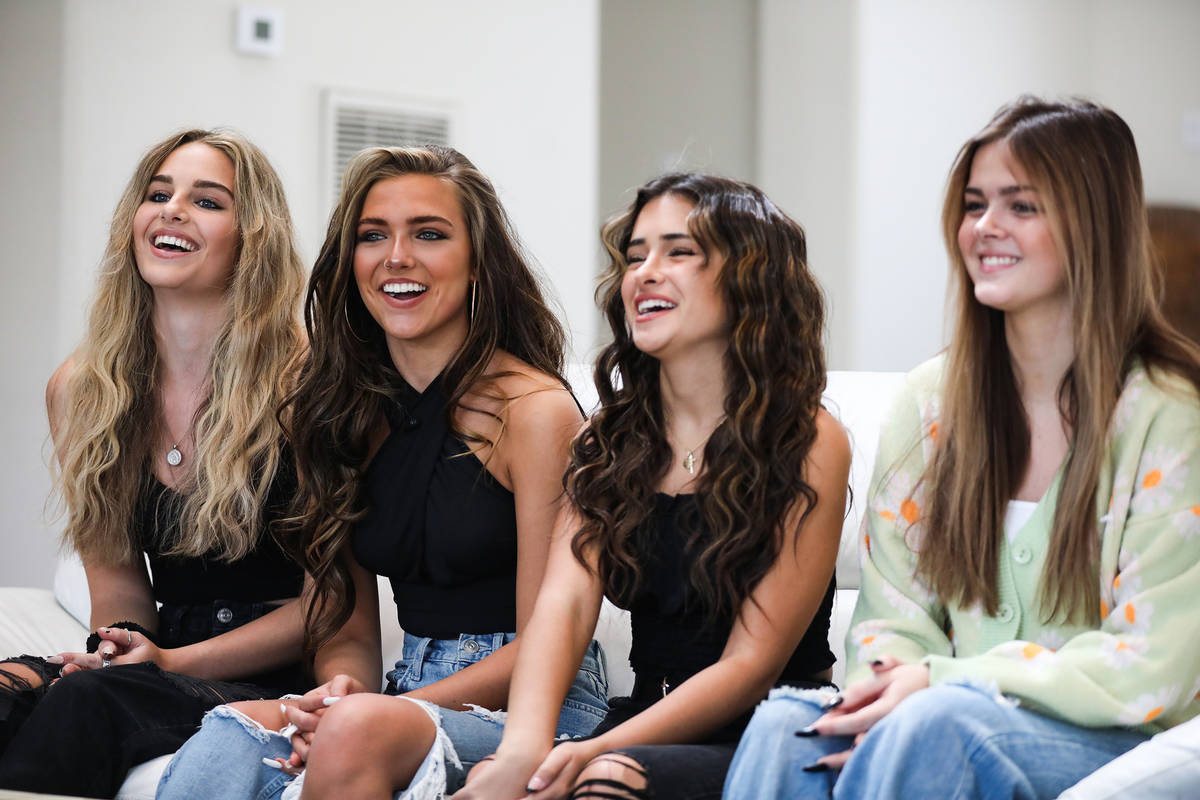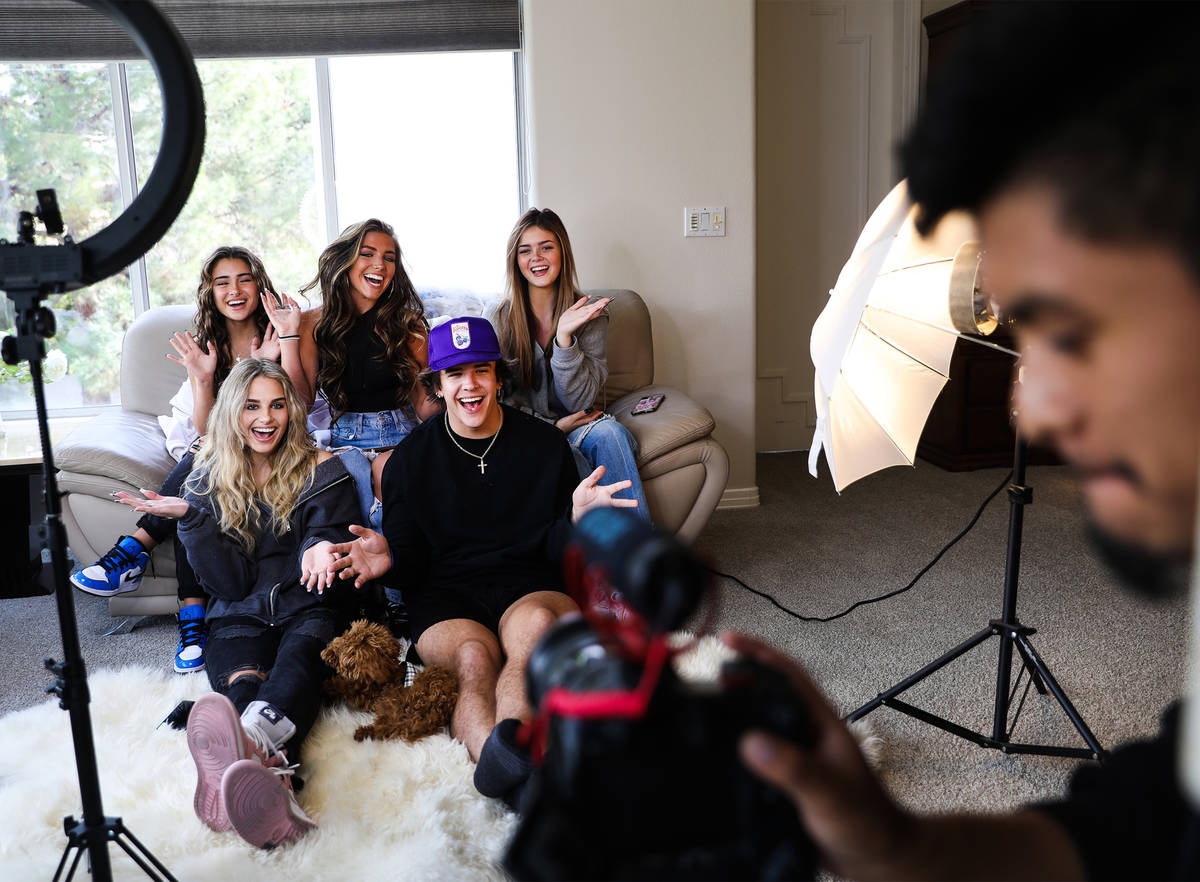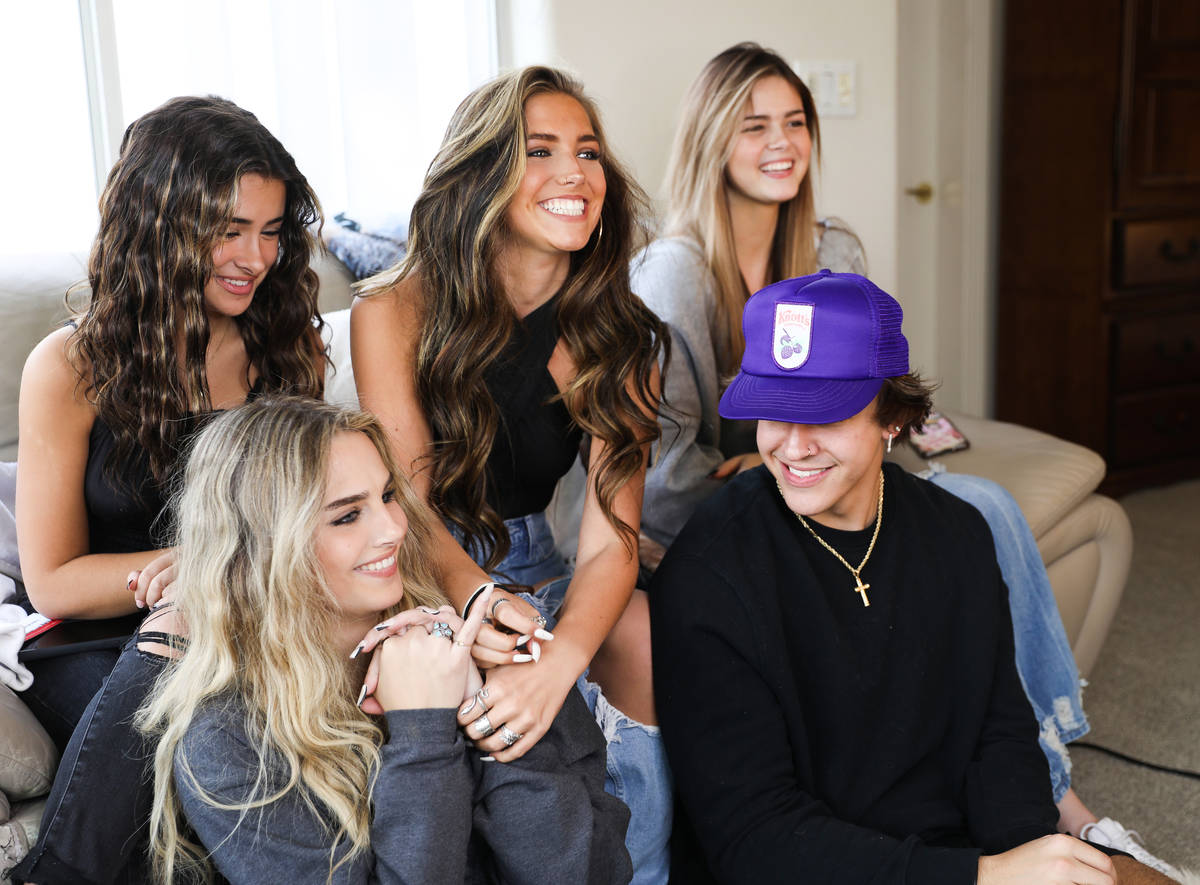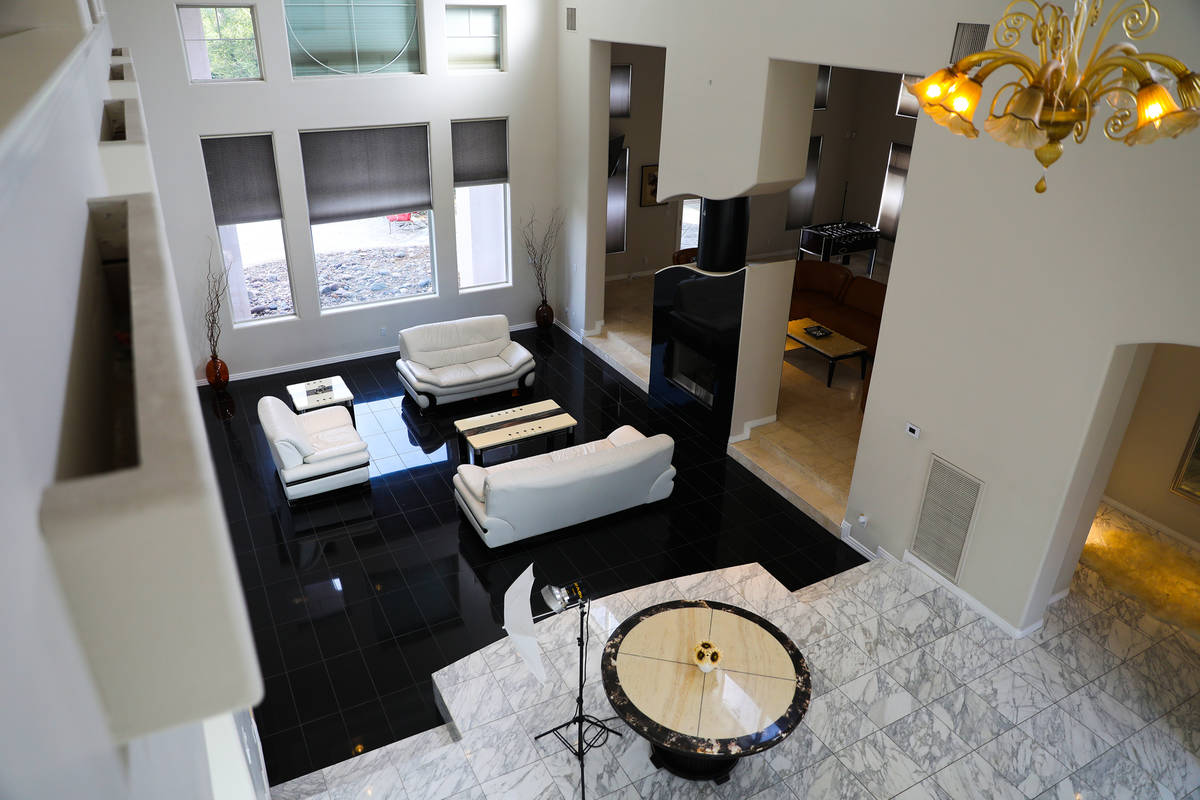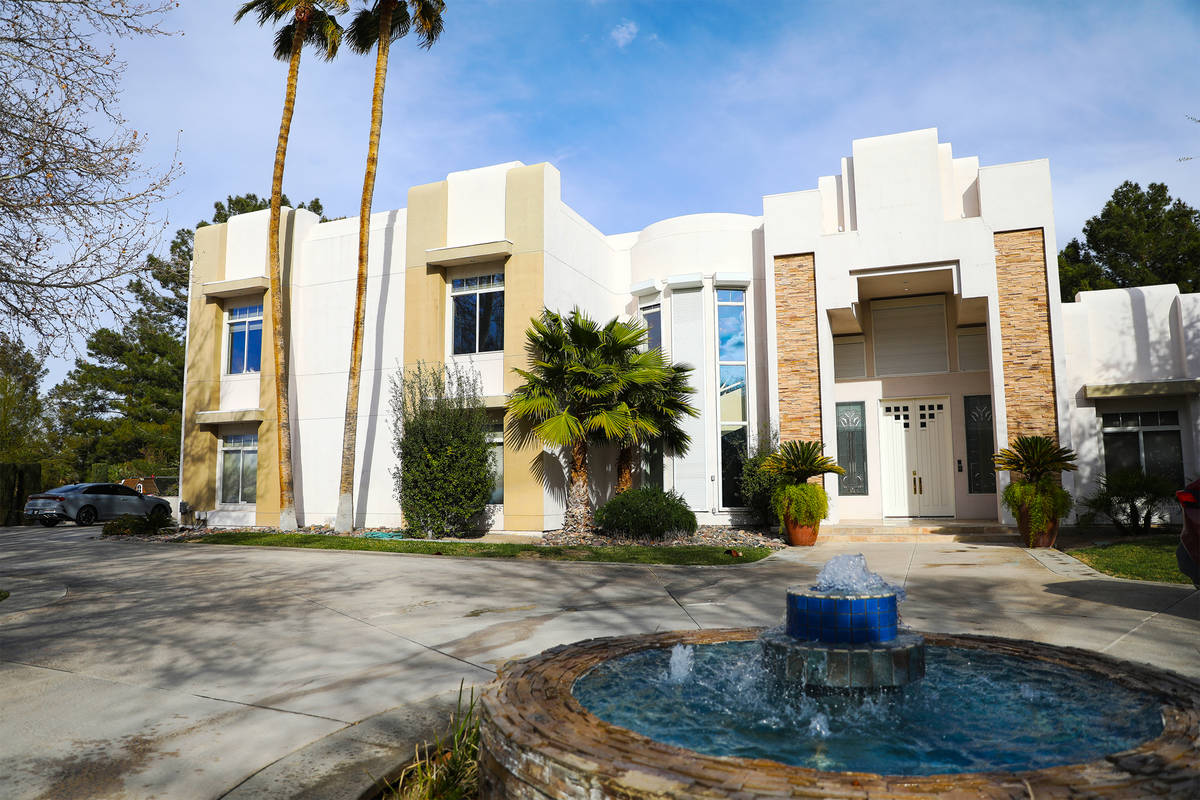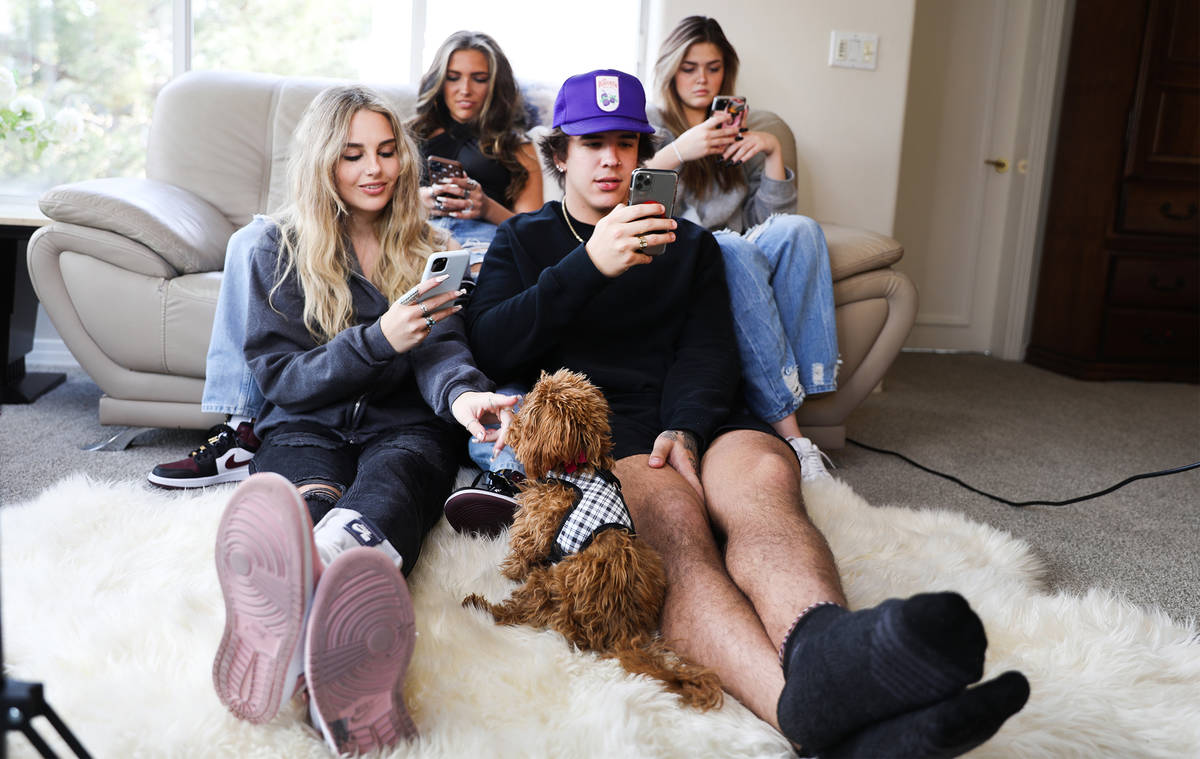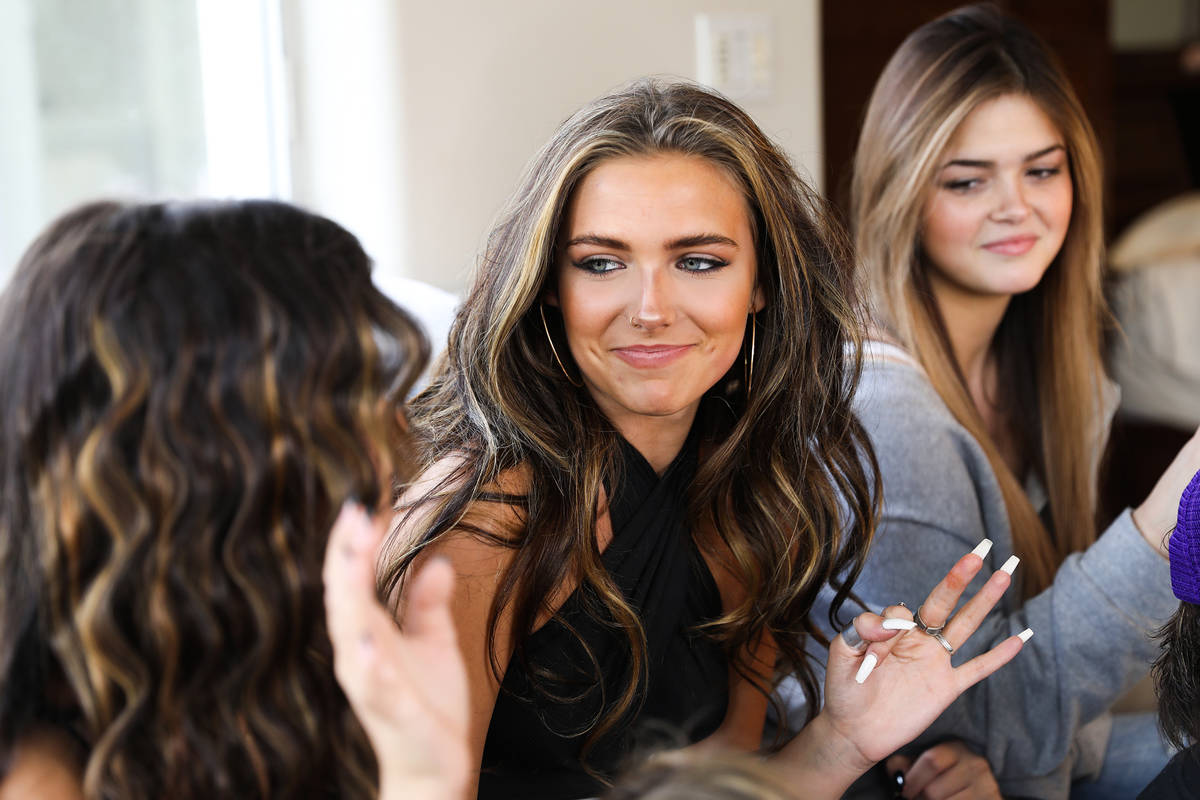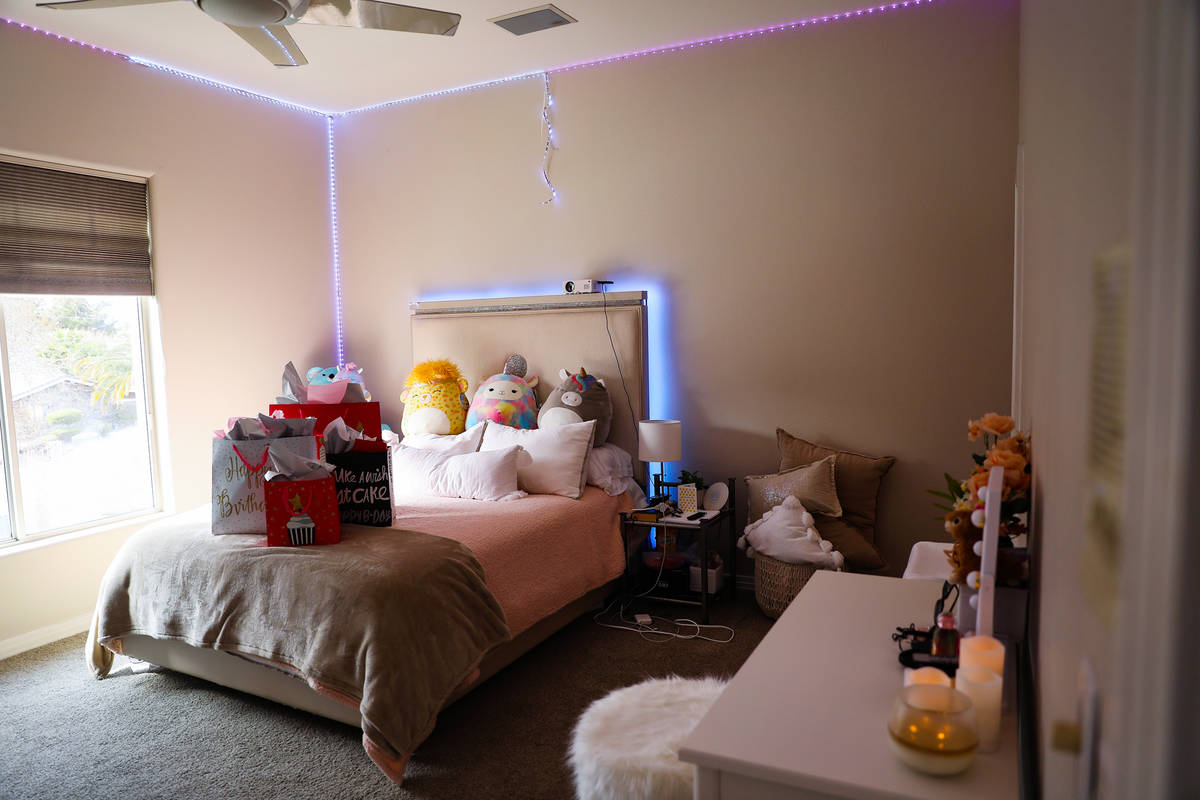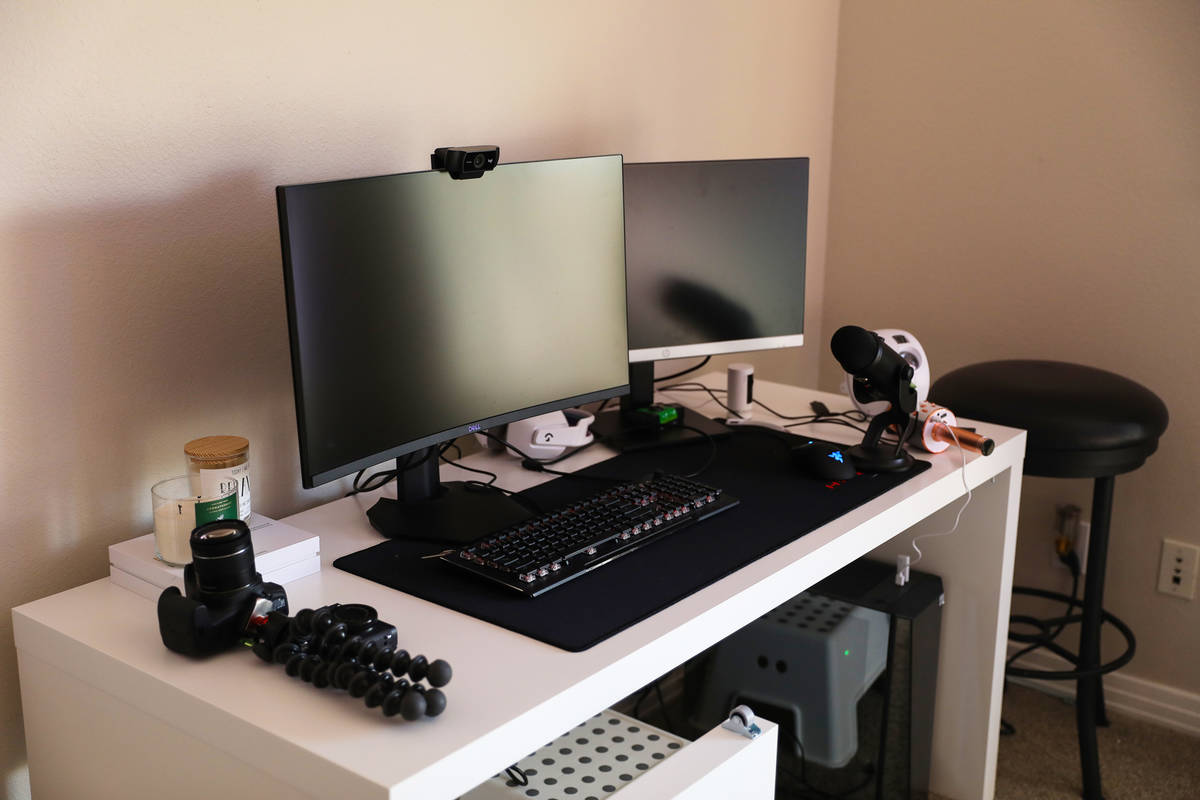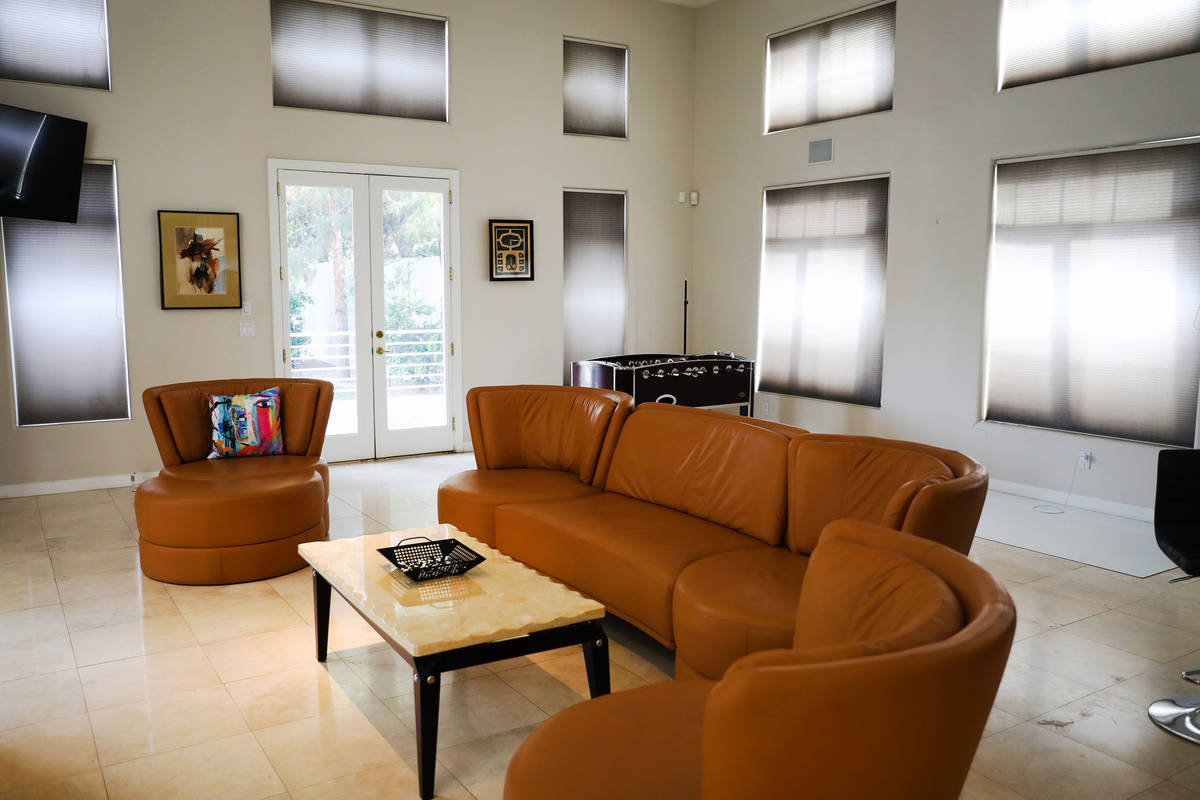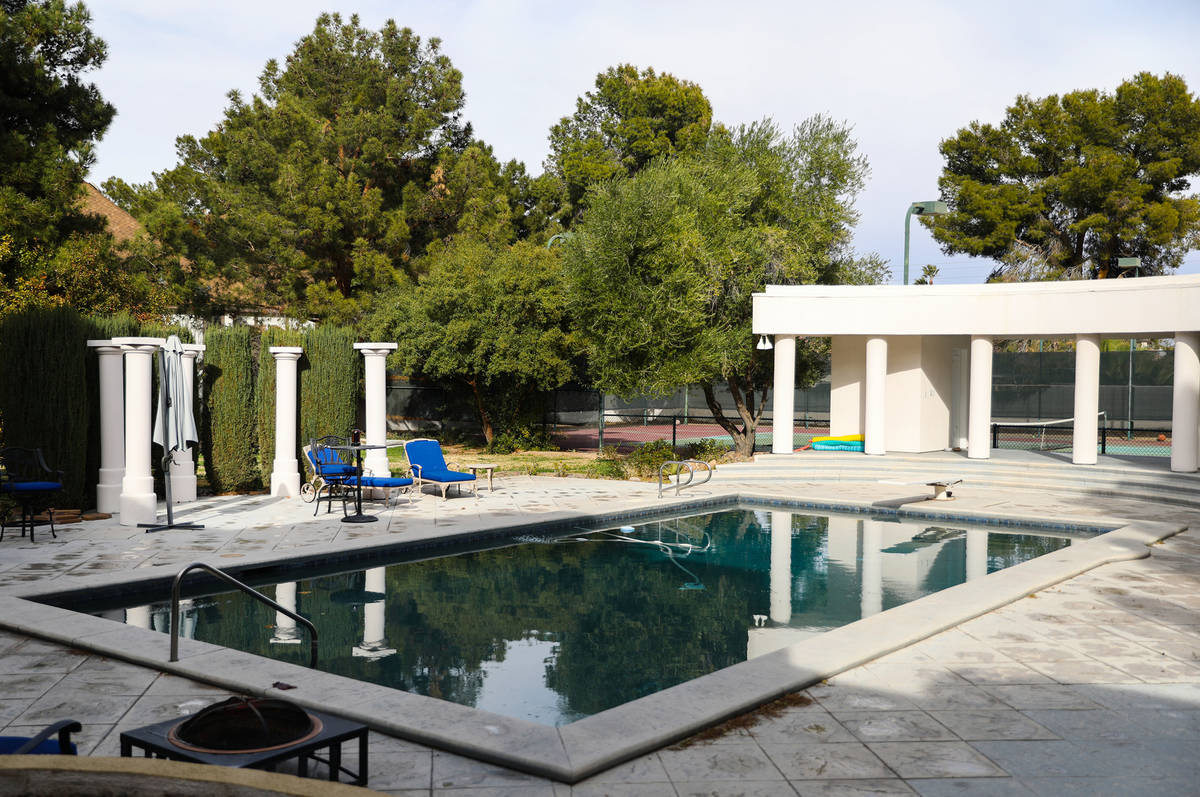67K views on YouTube? It’s just another day at the Society Las Vegas house
Hannah Evana said matter-of-factly that she’s going to lie, causing the 18-year-old’s four roommates to burst out laughing.
The group, not yet old enough to drink, were inside the sprawling master bedroom of their 9,000-square-foot Las Vegas home to film a YouTube video of themselves playing the cheeky game “Never Have I Ever.”
Filmed last month, the nearly 12-minute video has racked up more than 67,000 views on YouTube. It’s only a small slice of the content they produce on a daily basis as members of Society Las Vegas, the newly launched content house by Clubhouse Media Group.
Clubhouse Media — not to be confused with the invite-only audio app — is planning to create a network of content houses across the country. The Society Las Vegas content house opened in February and marks Clubhouse’s first U.S. expansion outside of California.
Content houses, or collab houses, are collectives of social media influencers who live and work together creating videos and snapping photos to post on social media platforms such as Instagram, TikTok and YouTube with the goal of building their fan bases.
“We’re very bullish about this space because we believe that it’s something that really has the potential to be big,” Clubhouse Media President Christian Young said. “The best way of saying this is we are a talent agency combined with a digital studio combined with really like a venture (capital) incubator.”
The company boasts access to an estimated 280 million social media followers through its Clubhouse influencers while the company’s own branded accounts have a following of more than 9 million.
The phenomenon of content houses isn’t a new concept, but it has gained traction in recent years with notable examples including Hype House and Sway House in Los Angeles. Still, turning it into a long-term business model is a gamble and runs the risk of fizzling just as the internet fame of social influencers can be fleeting.
Kyle Johnston, president of ad agency Gigasavvy, said Clubhouse will need to convince brands that it can offer scale and efficiency as well as authenticity from its budding network of influencers.
“If it’s done at scale and brands can get, say, 100 influencers at different houses across the country to all create content simultaneously and then feed that out, A/B test it all to see what works better — then you’ve potentially got a model there,” he said. “But still … there’s a huge movement now with big brands to be purpose-driven and more authentic, and the risk of getting called out by consumers … is pretty high.”
Market run
Young co-founded the company’s first content house, Clubhouse BH in Beverly Hills, in March 2020 with popular YouTuber Daisy Keech, Clubhouse Media Chief Operating Officer Simon Yu and Clubhouse Media Chief Executive Amir Ben-Yohanan, who also heads a New Jersey-based property management firm called West of Hudson Properties.
“We wanted to start something different,” Young said. “We decided that we would scale this out and go to different markets.”
The company now operates five content houses, which are leased, in the U.S. including Las Vegas and a location overseas in Malta. Influencers aren’t required by contract to live in one of their houses and can leave at any time.
Clubhouse went public shortly after launching on the over-the-counter markets in November through a reverse takeover, in which a private company buys shares to control a publicly traded company, then merges to become public.
For Clubhouse Media, that meant merging with a Chinese hospital that incorporated in Las Vegas in 2006 called Tongji Healthcare.
It seems like an unusual deal, but Young explained it as the best approach for the company to raise capital. It searched for a shell company to merge with that had ceased operations but was still listed on the public market.
“(Tongji) happened to be the cleanest — it was SEC reporting, it was third-party audited and very transparent,” he said. “So, we acquired it.”
Living large
Publicly traded or not, the members of the Society Las Vegas are more excited about the opportunity to live and work together.
Kayla Patterson, 17, has a following of more than 2.2 million followers and relocated from South Carolina to join the house last month.
She’s able to continue with school since her classes are remote because of the pandemic, but it means finishing her schoolwork early so she has time during the day to create content.
Her parents weren’t familiar with the concept of a content house but were still supportive.
“They were really scared for me to come across the country all by myself,” she said. “My grandparents can’t even comprehend what is happening. But my friends, they’re really excited for me.”
Evana, who moved to Las Vegas from Ohio, said she joined as an intern.
“I had a little bit of a following on Instagram and TikTok but not necessarily like a creator (level) following,” said Evana, who has more than 570,000 followers. “So, I’m here and I’m interning. I’ll help plan out some photo shoots and stuff like that and I drive everyone.”
Their six-bedroom, six-bath house is 15 minutes east of the Las Vegas Strip near McCarran International Airport. The white Art Deco-style home has a large swimming pool and lighted tennis court. Inside, there’s a movie room just off the kitchen’s large breakfast nook and a dance pole upstairs.
Jordan Beckham, 16, is the youngest of the crew but has the most followers at more than 4 million across YouTube, TikTok and Instagram.
“When you’re at home, you don’t really have that source of people to collab with so I feel like you kind of feed off of everybody’s energy and their following (of fans),” Beckham said. “It’s an amazing opportunity, like anybody would take it.”
Brian Freeman, chief executive of influencer platform Heartbeat, said it’s a win for all involved.
“As the content creator, I get representation. I get access to more followers. I get a place to live. I get an epic lifestyle,” Freeman said. “And from the content house perspective, they can go to an advertiser and say, ‘Hey, we’ve got 100 million followers — pick your poison. Do you want car enthusiasts? Do you want gaming enthusiasts? We’ve got something for everybody.’ The more houses they have, the more talent they have and the bigger the core brand, Clubhouse, gets, and that benefits advertisers by giving them a one-stop shop.”
Lights, camera, action
Cole Beckham, 20, is the oldest of the group and the self-appointed big brother, adding that he’s the one tasked with lifting heavy items and taking out the trash. He joined the house in February with sister Jordan.
While he sees Society Las Vegas as the best way to grow his fan base of more than 210,000, he admits it can be mentally taxing constantly churning out videos while living and working in the same space.
“There are days when it gets overwhelming, but it’s really good to live with people that love and support you,” he said. “And it’s OK to say, ‘Hey, I’ll take a break today.’ It’s really important to manage that, and we’ve learned so far, especially from being here in February and past life experiences, to maneuver and manage everything.”
Gabriella Annalisa, 19, said that in addition to creating fresh content for their own social media channels, each member is required to produce regular videos and photos on behalf of the content house, in other words media assets that are meant for Society Las Vegas’ social media accounts. She has more than 2.6 million followers.
“I’ll post like three to four times a day on TikTok, and then we try to get at least one YouTube video done or an Instagram post too,” Annalisa said.
“We all have our different schedules, but we all try to post quite a few times a week.”
A small sample of YouTube videos include Jordan Beckham getting her first tattoo and Annalisa’s videos of moving to the Las Vegas content house.
Producing a steady stream of content not only keeps followers engaged, but it can also help her snag sponsorship deals from brands, whether it’s free clothes or money to post specific content, according to Annalisa.
The more organic and authentic a video is the better, said Nixon Peabody LLP Partner Ellie Heisler, who works with several top influencers on licensing, IP protection and brand building.
“If that influencer lives in a house and they’re living with a bunch of friends that decide to pop into that (sponsored) video or repost their friend’s content, all of a sudden the brand is paying for one influencer but they potentially get the reach of so many more,” she said. “If all the influencers are being managed by the same company in the house, they can negotiate for multiple brand deals for their multiple talent.”
Slice of the pie
Young said the company will present creators with brand deals and negotiate the compensation, which helps Clubhouse cover operating expenses from hiring a videographer to a regular cleaning service for the house.
“We also take equity in companies and market them to also provide revenue along with acquiring companies in the social media space that the network can promote,” he said.
Company filings show some creators enter exclusive management agreements under Clubhouse Media’s talent management firm Doiyen.
Doiyen receives between 10 percent to 50 percent “of all gross compensation earned and received by the creator during the term of the management agreement, regardless of whether we introduced the opportunity resulting in compensation to the creator.”
How compensation is calculated depends on the deal, Young said.
Influencers are expected to create content, called deliverables, for the house account in exchange for being provided with living arrangements and other services such as photography. Young said they will sell against them to companies for marketing purposes or use the content for Clubhouse Media’s main social channels.
If a brand opts to work directly with Clubhouse and its branded accounts, then Doiyen receives the full payment. Should a brand choose to work directly with an influencer, then the creator can expect to pay Doiyen a percentage of their earnings.
Clubhouse Media Creative Director Heather Ferguson said its creators have a say in what brands they would like to work with and can reject offers presented by Clubhouse.
“We’re not here to make a quick buck from this brand deal,” she said, adding its goal is helping influencers reach their career goals. “Our point of differentiation is we have publicists. We have a media team. We have full-scale video production. We have full-scale styling production and in-house studio.”
But the company hasn’t turned a profit. It reported a net loss of an estimated $2.6 million for the fiscal year ended Dec. 31 though it reported revenue of about $1 million, up from $0 the previous year.
Young said that the company is still in “hyper growth” mode and that content houses aren’t the only line of business, pointing to plans to grow through acquisitions.
“This is really a 360 business,” he said. “It’s not just about the brand deals. It’s not just about the houses. I know this is sort of the front end of what people see, but I think it’s important for the public to understand we have a lot else going on.”
Contact Subrina Hudson at shudson@reviewjournal.com or 702-383-0340. Follow @SubrinaH on Twitter.
Vegas Invasion
TikTok creators will gather at the Plaza from Friday through Sunday for what they're billing as the largest meetup involving the social media site.
Attendees at the sold-out Vegas Invasion will collaborate on videos, photos and more in downtown Las Vegas, while also raising money and awareness for the Las Vegas chapter of the Paralyzed Veterans of America, according to a news release from the Plaza.
TikTok creators Chiefnitro, Timeoutwithjosh and KeithandFrank organized the event to support the nonprofit that provides necessities to paralyzed veterans, such as hygiene products, shoes, and clothing. They plan to hold other events around the country, in Colorado and at Walt Disney World.
The Paralyzed Veterans association, like other nonprofits, has faced challenges fundraising during the pandemic, the release said.
"As a retired Navy Chief with 20 years of service and deployments to Iraq and Afghanistan, I have had friends not return home or return home disabled," Jay Malyuk (Chiefnitro) said in the release. "I've had close calls myself, though never seriously injured, and I will do whatever it takes to give back to the military and their families."
Keith Peterson (KeithandFrank), a member of the U.S. Coast Guard, said, "As a resident of Las Vegas, I see firsthand the struggles that some of our veterans go through, and I want to help them in any way I can."
Vegas Invasion is also partnering with Hogs & Heifers Saloon, Axehole, Gene Woods Racing Experience Go-Karts and several other Las Vegas businesses to raise money.
TikTok creators in attendance will have the option to donate throughout the weekend or directly through the Vegas Invasion website at vegasinvasiontt.com.



